I've used a French press to brew my morning coffee for years, mostly because it's inexpensive and easy, but also because I like a rich, viscous brew. When a friend bought me a pourover kit for my birthday a few years ago, I quickly embraced the meditative ritual of repeatedly saturating coffee grounds with hot water from that elegant, gooseneck kettle; plus, I liked the cleaner, brighter cup it yielded. Alas, life got in the way again, as it so often does, and I went back to setting and forgetting it with the ole French press.
Over time, I've unriddled a few secrets to a better French press brew. I always start with whole-bean coffee, which I coarsely grind. I like using filtered water, and I always steep the grounds for exactly five minutes.
Seeking some more professional tips, I called on Bailey Manson, innovation manager at Chicago-based Intelligentsia. I did so sheepishly, knowing that Manson is a pourover-coffee lifer who's dedicated his career to unearthing impeccably extracted brews. I also knew for those very reasons that there might be no one better to ask.
"Three reasons," Manson replied, when I asked why he's not big on using a French press. "One is sediment, but you can work around that. Second is that making it well requires way more work than pourover, so it's not user-friendly. Third, it is inefficient in that it's an immersion method."
At its most basic, pourover brewing involves pouring water over and through coffee grounds to extract their flavors. Continuously replenishing the liquid surrounding the grounds with fresh water promotes a faster, more efficient brew. French press, on the other hand, is an immersion method in which hot water sits with coffee grounds in a cylindrical beaker before the grounds are filtered out by pressing down on a mesh plunger.
Want more great food writing and recipes? Subscribe to Salon Food's newsletter.
"With the French press, you're relying on the kinetic energy of the hot water to do all of the work of extraction," Manson said. "As the little molecules move around and bump into the coffee, the minerals in the water grab solubles from the beans' cells."
In order to get the percentage of coffee dissolved that you get with the manual pourover method, you'd have to let the grounds and water sit in the French press for 30 or 40 minutes, "by which time the flavors would have totally degraded," Manson said.
Instead, his optimized French press method calls for stirring the coffee grounds almost constantly throughout immersion for better flavor extraction. (It's worth noting that he recommends this method for lighter-bodied, high-density coffees as opposed to dark roasts.)
RELATED: Competitive caffeine: Inside the wild world of professional coffee tasting
Manson begins with a ratio of 1 gram of coffee per 15 grams of water, or 51.5 grams (roughly 9 Tbsp) of coffee grounds for a quart-size French press. Whereas a French press typically calls for coarsely ground beans to slow down extraction and minimize fines (tiny particles), Manson suggests grinding the beans fine like you would for pourover to increase the surface area exposed to the hot water.
"Imagine the surface area of 100 grams of bowling ball versus 100 grams of golf ball," he said. "Most of the coffee is trapped inside, and you're relying on water trying to come in and get to the core."
He preheats the beaker and plunger with some of the boiling water before adding the grounds and water. After the grounds settle at the top and start off-gassing (aka releasing gas, which helps the water extract flavor), he presses the grounds into the water, then he stirs constantly for four to six minutes. A minute into stirring, he skims off the foam, which creates a thinner mouthfeel and prevents CO2 from dissipating back into the brew, which can add bitterness.
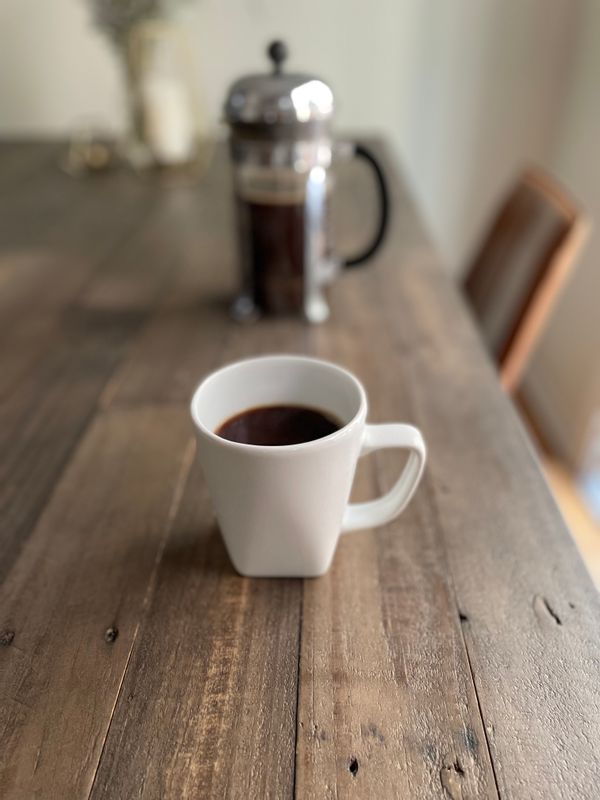
(Photo courtesy of Maggie Hennessy)
You know it's done when it smells how you want it to taste. "If it still just smells citrusy, it probably needs more time," he said, "but once you're finally getting those red fruit and berry notes, it's likely ready."
When I tried Manson's method the next morning, I was delighted by the thinner, silkier texture and more nuanced coffee flavors in the final brew. It was, without question, the best French press coffee I'd ever made, even if it wasn't really French press brew. I was gobsmacked by the quantity of coffee the method requires, which drove home Manson's point about its inefficiency.
I'm also fairly certain most French press coffee drinkers won't love the idea of hovering over their brew with one eye on a stopwatch as they stir continuously. As Manson pointed out, with a deeply subjective ritual like coffee, you have to meet people where they're at.
RELATED: What does the term "ethical coffee" actually mean?
"Most people don't want to try something new when it comes to coffee," he said. "Or if they do try it, they might get the intended outcome, but it's different and does not meet their expectations."
Indeed, most days, I stick to my set it-and-forget-it immersion method. But about once a week, I'll head into the kitchen with a determined air. I arrange my fancified French press mise en place — a small bowl, wooden spoon and tablespoon — on a single piece of paper towel next to my digital scale and clean French press. I preheat the beaker with some of the boiling water, then replace it with a heap of fresh, fine grounds. As the news radio gabs on and the dog snuffles around underfoot, I stir and stir, watching CO2 rise to the top of the beaker in a tawny foam while I breathe in aromas of cherry and milk chocolate.
I press and pour it into my pre-warmed mug. That first luscious sip tastes like the best coffee I've ever had, and I'm reminded that taking time for small gestures of self-kindness — like brewing a perfect if totally inefficient cup of coffee — is sometimes enough to make one's whole day.
How to Brew Intelligentsia's Optimized French Press Coffee
What you'll need:
- Coffee grinder
- Digital scale (optional)
- Quart-sized French press
- Stopwatch (or, you know, the one on your phone)
- Wooden spoon
- Tablespoon
- Small bowl for catching excess foam
Directions:
1. Using a digital scale, measure 51.5 grams of whole-bean coffee for a quart-size French press. (For those measuring in tablespoons, aim for about 1 Tbsp ground coffee per 3 oz. of water, which equals roughly 9 Tbsp here.) Finely grind the beans as you would for pourover coffee.
2. Bring a kettle of water to a boil. Preheat the French press and plunger by adding about 8 oz. of the boiling water to the french press and pressing in the plunger. (Note: You can also pour some of the hot water in your mugs to preheat them at this point.)
3. Dump out the preheated water, and add the coffee grounds to the French press. Fill it with the hot water while starting a stopwatch counting up. A crust of coffee will form at the top of the French press; let that sit for one minute. As Manson pointed out, "This is good as it promotes off-gassing, which helps the brewing water extract the roasted coffee's flavors."
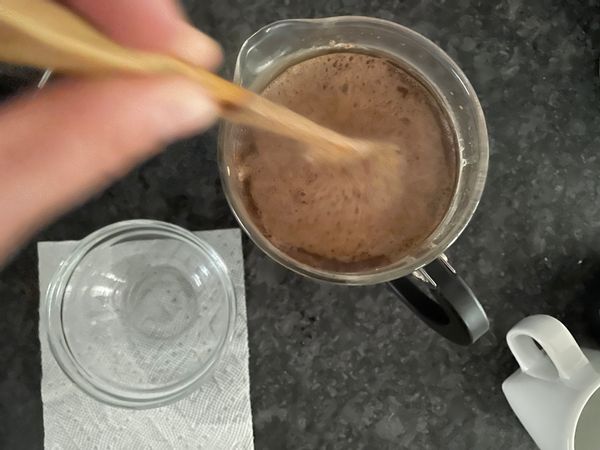
(Photo courtesy of Maggie Hennessy)
4. Use the back of a wooden spoon to push the crust down into the brew. Spend the next four to six minutes constantly but gently stirring the slurry back and forth to keep the grounds settling at the bottom. Some people like to think of drawing a "#" pattern for the stirring motion.
5. After about a minute of stirring, scoop off the remaining foam on the top of the brew and discard it. "This really just contributes bitterness and carbonic acid to the brew that you don't need."
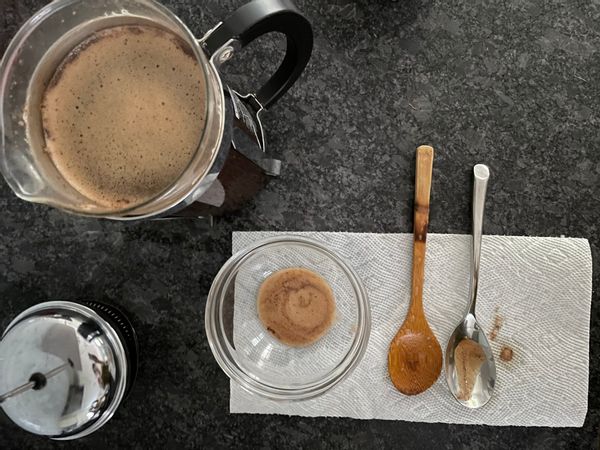
(Photo courtesy of Maggie Hennessy)
6. Once you're finally tired of stirring your brew, let it sit for about 30 seconds so the grounds can settle to the bottom.
7. Add the plunger, and gently press it down.
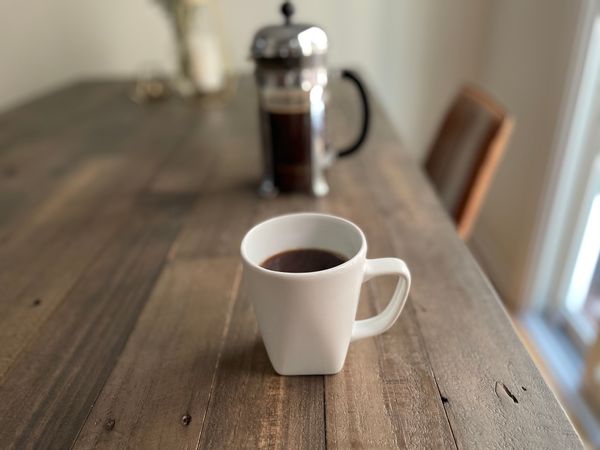
(Photo courtesy of Maggie Hennessy)
8. Pour out your brew. Enjoy!
More by this author:
- My 10-year carbonara journey
- A love letter to all the produce I haven't picked
- The nourishing joy of simmered whole chicken
- At Bombera, Oakland's Chicano cooking heritage is the future
- Do not rage-cook mapo tofu, and other emotional kitchen lessons
- Tortilla española, mi cariño: An ode to the simple, perfect Spanish omelet
- My favorite, simplest eggplant parm (Yep, this recipe is as easy as it gets!)


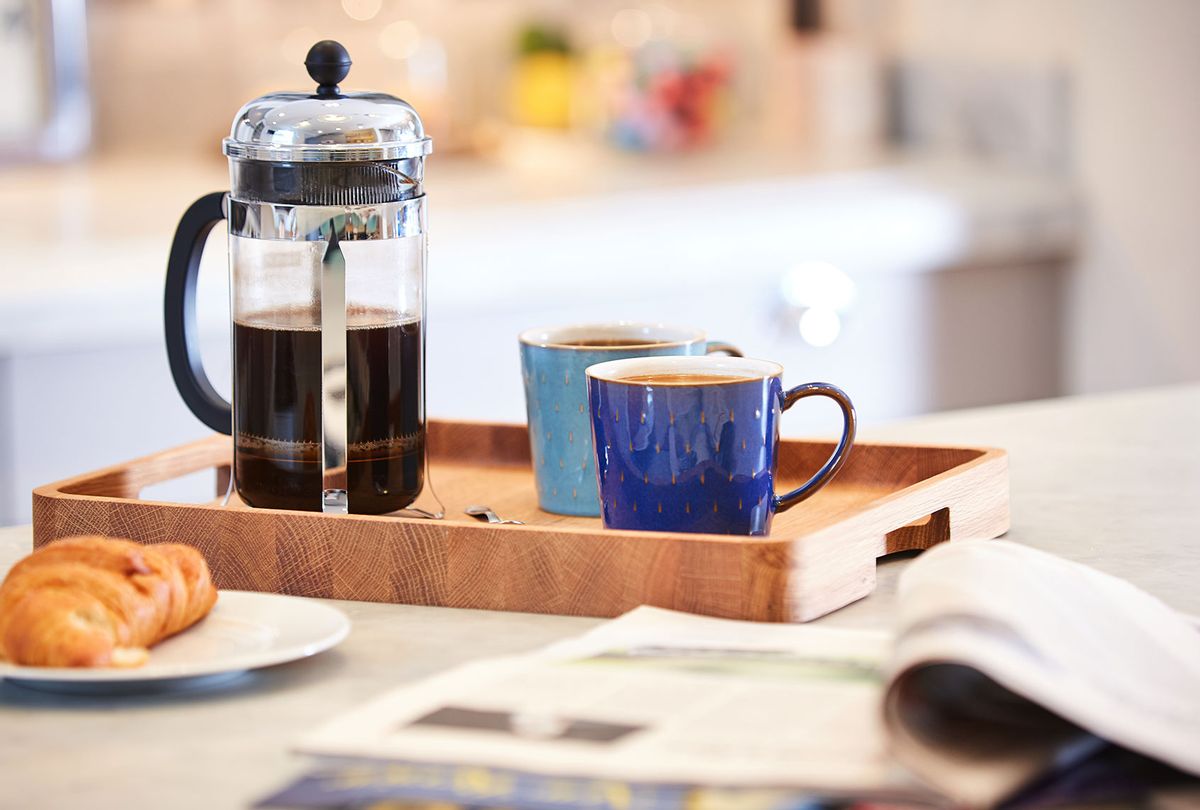
Shares